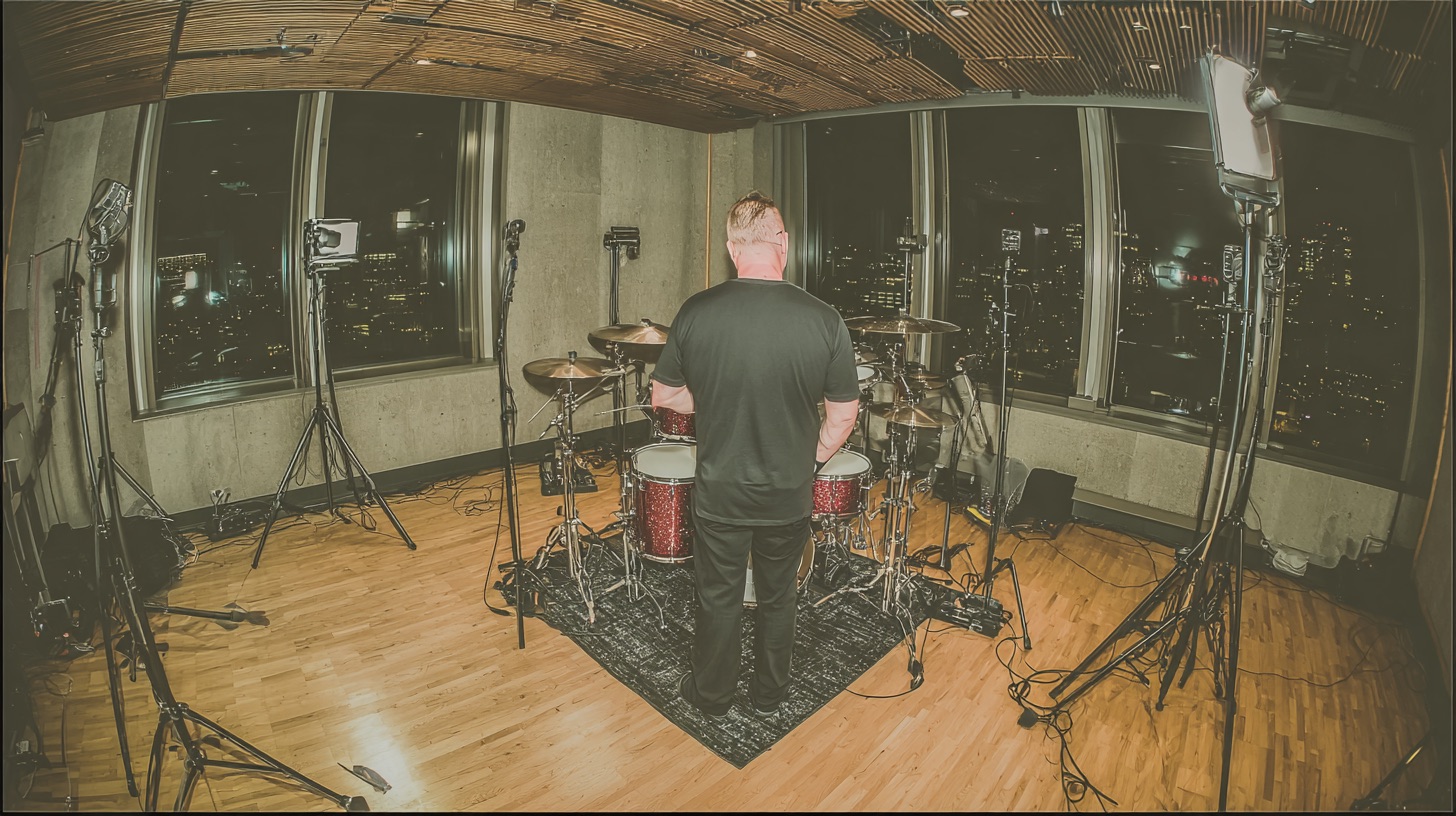
Dialing in THICC Bass Guitar with Bilmuri
Nail The Mix Staff
Let’s be real, the low end in modern metalcore is an absolute beast. It’s not just the classic chug of a bass guitar anymore. It’s a full-frequency foundation that’s powerful, deep, and surprisingly clean. Take a listen to any recent Bilmuri track, and you’ll hear exactly what we’re talking about—a massive, polished, almost poppy low-end that glues the whole mix together.
Ever wonder how they pull that off? We got a look under the hood with producer Will Carlson as he broke down the low-end production for Bilmuri, and the secret isn’t just one instrument—it’s a carefully constructed stack of bass, subs, and synths. Forget just cranking a bass DI; this is about building a modern low-end from the ground up.
Building the Foundation: From DI to 808s
The first step to a massive low-end is establishing a solid sub-frequency foundation. A standard bass guitar, especially in drop tunings, might not have the consistent power needed in the 30-40Hz range. That’s where layering comes in.
The Clean Sine Wave Method
Typically, a great starting point is to reinforce your main bass track with a clean sine wave. This involves creating a synth track with a simple sine wave patch that perfectly mirrors the bass guitar’s MIDI or notation. The goal is to get a super clean, round sub that sits just underneath the DI bass, providing that deep rumble you can feel.
This is why having a crystal-clear bass DI is non-negotiable. A clean signal gives you a perfect canvas to layer other elements on top without introducing unwanted noise or artifacts. Getting your DI right from the source is one of the most crucial equalization strategies.
The Bilmuri Approach: Using an 808 Sample
For the Bilmuri track in question, they took a slightly different path. Johnny (from Bilmuri) had an 808 sample from Splice that he loved in the demo, so they ran with it.
Will loaded this 808 one-shot into Logic’s Quick Sampler. This is a killer move because it instantly turns any sample into a fully playable MIDI instrument. By programming MIDI to match the kick or bass pattern, they could use the 808 as their primary sub-bass layer. While heavily saturated 808s can sometimes be trickier to fit into a mix than a clean sine wave, it nailed the vibe they were going for.
Adding Texture with a “Low Mid Fuzzy Boy”
With the sub-bass handled, the next layer is all about filling the space between the deep lows and the guitars. This is where modern metalcore production leans into more produced, electronic, and poppy textures. Instead of relying solely on the bass guitar’s natural tone, Will Carlson introduces what he calls a “low mid fuzzy boy.”
Dialing in the Fuzz
This layer isn’t meant to be a sub; it’s a distorted synth bass that lives in the low-mids and adds character and aggression that complements the guitars.
- The Synth: For this sound, the go-to synth was ANA 2.
- The Preset: They started with a preset called “Electro God” and tweaked it slightly, likely adjusting the filter cutoff and macro controls to get it sitting just right.
- The Saturation: The real magic comes from hitting this synth hard with a saturation plugin. They used Soundtoys Decapitator with a “very heavy-handed” approach to create a thick, fuzzy texture that blends seamlessly with the heavy guitars.
The Key to Clarity: Managing Your Layers
Okay, so now you have three low-end layers: the DI bass, the 808 sub, and the fuzzy synth. The biggest danger here is creating a muddy, cluttered mess. Each of these elements has its own attack or transient, and if they all hit at the same time, you’ll lose all definition.
Make Your Synths “Coast”
The solution is to manage your transients carefully. You don’t want to hear the individual “pluck” of the fuzzy synth every time a note is played. That sound is already coming from the real bass guitar. The goal is to make the synth layers “coast” underneath everything else, acting as a continuous tone rather than a percussive instrument.
You can achieve this by:
- Extending the MIDI notes so they overlap and create a smooth drone.
- Slowing the attack time on your synth patch.
- Manually nudging the synth MIDI notes back just a few milliseconds.
The Ultimate Sidechain Trick for Punch
Here’s the tip that can change your entire low-end game. To make sure the kick drum punches through this dense wall of bass, you need an incredibly fast and effective sidechain.
Will uses a technique popularized by mix engineer Jason Joshua. Here’s the setup:
- Route your main bass DI, your 808 track, and your fuzzy synth bass to a single bass bus.
- Place a compressor on this bass bus.
- Set up the compressor’s sidechain input to be triggered by your kick drum.
Every time the kick hits, the entire bass bus ducks out of the way for a split second. This isn’t a slow, pumping sidechain; it’s an ultra-fast, almost invisible ducking effect that creates a perfect pocket for the kick’s sub and transient to cut through. This is one of the most powerful tricks for a clean, hard-hitting low end, allowing you to have a ton of sub information in both your kick and your bass without them fighting for space. Careful application of EQ on both the kick and bass bus can further enhance this separation.
Putting It All Together
So, the “metalcore trick” you’re hearing everywhere isn’t just one thing. It’s a combination of smart layering and processing:
- A Solid Foundation: Start with a clean DI bass and reinforce it with a sub layer (either a sine wave or an 808).
- Fuzzy Texture: Add a distorted mid-range synth to add character and glue the bass to the guitars.
- Aggressive Sidechaining: Use a fast sidechain on your entire bass bus to let the kick drum dominate.
These are the kinds of detailed, professional techniques that separate good mixes from great ones. Trying them is one thing, but seeing exactly how a top-tier producer implements them, automates them, and makes them work in a real session is another level entirely.
Bilmuri on Nail The Mix
Will Carlson mixes "BETTER HELL (Thick boi)"
Get the Session
If you want to stop guessing and learn how to build massive, polished mixes from the ground up, check out Nail The Mix. Every month, you get the real multitracks from bands like Spiritbox, Architects, and Lamb of God and watch the original producer mix the song from scratch, explaining every single decision along the way. It’s time to get the multitracks and start mixing modern metal beyond presets.
Get a new set of multi-tracks every month from a world-class artist, a livestream with the producer who mixed it, 100+ tutorials, our exclusive plugins and more
Get Started for $1






